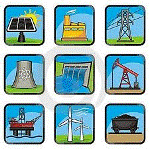Department of Agricultural Economics: Undergraduate Research

Op-Eds from ENSC230 Energy and the Environment: Economics and Policies
Date of this Version
Fall 12-12-2019
Document Type
Editorial
Citation
Krivanek, Sawyer. Op-Ed from ENSC 230. Energy and the Environment: Economics and Policy, University of Nebraska-Lincoln, Department of Agricultural Economics, Fall 2019.
Abstract
Hydraulic fracking began nearly 80 years ago and was initially headlined as a brand new, fuel efficient alternative to coal and oil. Natural gas has been disguised as a clean fuel, when in reality it is just another dirty, polluting, environmentally harmful fossil fuel. The detriments of fracking heavily outweigh the benefits, and it needs to be banned on public and private lands. Natural gas has been viewed as a cleaner alternative to coal and oil, so immediately fossil fuel industries took advantage of that narrative. Consumers, eager for cleaner alternatives, have been tricked into buying into the fracking fad. Hydraulic fracking has provided substantial economic benefits to the US economy. Fracking has influenced a drop of natural gas prices by 47% ever since 2013 (Brookings 2015). According to the US Energy Information Administration, gas bills have dropped $13 billion per year from 2007 to 2013 since fracking was introduced. Alongside this, energy consumers have seen economic gains of $74 billion per year from increased fracking. Between 2005 and 2012, fracking has generated over 725,000 jobs (Vox 2015). Consumers are being manipulated by fossil fuel industries and are directly influenced by these cheaper prices. Modern fracking came onto the scene in American history, the 1990s. Al Gore was inventing the internet and we believed we were living in the end of history. It makes sense then, to understand fracking as an innovation of technology that lowers our bills and provides cleaner energy. Much like diet pills though, it doesn’t tell the whole story. Natural gas primarily produces methane, which is a much more potent greenhouse gas relative to carbon dioxide. Not only does burning natural gas emit methane into the atmosphere, the extraction process causes a great deal of methane to leak into the Earth’s core. Fracking operations require 5-10 acres of fields with high pressure gas wells and water tanks. According to the US Department of Energy, there are already over 500,000 natural gas wells spread across the country. Homeowners whom lease their land are not fully informed of the environmental consequences of fracking. Their local water sources and atmosphere often become contaminated. These consequences were revealed in the popular Gasland II film, which shows how the water grids of Pennsylvania communities became contaminated after fracking sites moved in. Even though an individual may not have leased their land, often neighbors leased their land which led to the entire communities’ water becoming contaminated despite not signing a contract. Beyond the effects on humans, fracking sites harm habitats and disturb ecosystems. They cause a great deal of erosion and inject pollutants into the ground. Many underground areas that become polluted have aquifers which become contaminated. Well areas are also experiencing large amounts of seismic activity connected to fracking. Fracking requires millions of gallons of water mixed with thousands of chemicals to be effective. Fracking is exempt from the Safe Drinking Water Act, Clean Water Act and the Clean Air Act (NRDC 2013). Companies aren’t required to disclose the chemicals used in the process or be held responsible for water contamination. According to the FracFocus database, in the last decade fracking has used 5 billion pounds of hydrochloric acid, 1.2 billion pounds of petroleum distillates and 445 million pounds of methanol. These are only the ‘known’ chemicals, whereas a long list of chemicals used are kept secret. Fracking wells produced an estimated 15 billion gallons of wastewater in 2014 (Environment America Research & Policy Center 2016). While switching to natural gas may reduce emissions in the short run, it does not eliminate them. It simply further delays the climate crisis. The renewable energy era is approaching quickly, and natural gas will not win the sustainability race. We have a choice to make – will we be on the side of the planet or the stakeholders? What our country needs is pure, clean energy. Not dirty, clean fuel. If we ban fracking, millions of Americans will lose their jobs. There is no getting around that fact. Fracking is key to the economies of many communities, and proposals to ban it outright often don’t consider that human cost. Many of the presidential candidates in 2020 on the democratic side have more detailed plans than just banning fracking, fortunately. Bernie Sanders’ $16 trillion climate plan aims to create over 20 million jobs while providing 100% renewable energy by 2030. Sanders’ plan would be successful through imposing fees and taxes on the fossil fuel industry. This plan of course includes a ban of fracking on private and public land. This sort of climate plan directly takes job loss into account. Employees of the natural gas industry should not fear such a proposal when there is the potential replacement of millions of renewable energy jobs. “Under the plan, the federal government would also provide five years of unemployment insurance, a wage guarantee, housing assistance and job training to any displaced worker in the fossil fuel industry” (Friedman, NY Times). Workers should view this as an opportunity to explore clean energy jobs in a healthier environment, both for themselves and our planet. If we are truly serious about tackling the climate crisis, we must eliminate all harmful emissions. Despite the economic benefits natural gas provides, there are opportunities in the clean renewable energy industry knocking at the door. The US needs to take a closer look at fracking and realize sooner than later why a ban is necessary.
Included in
Environmental Indicators and Impact Assessment Commons, Natural Resources and Conservation Commons, Oil, Gas, and Energy Commons, Other Environmental Sciences Commons

